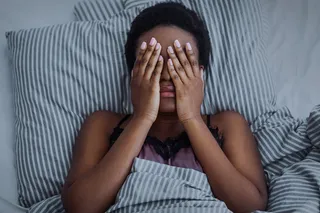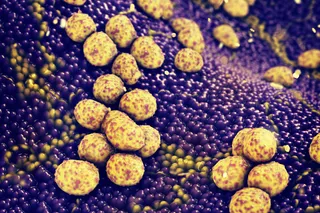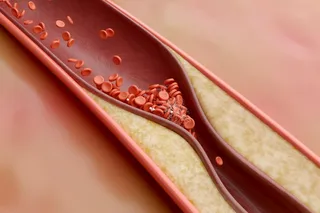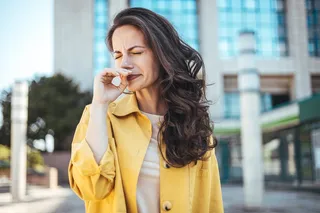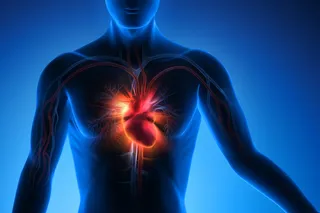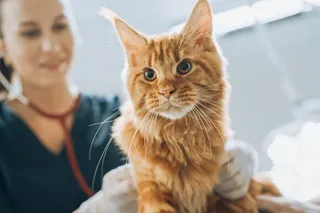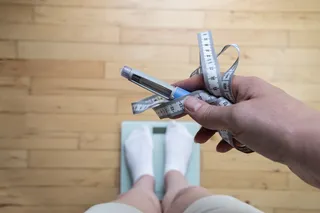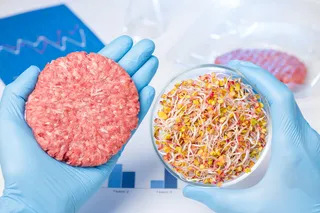Sleep was consuming Anna Sumner’s life. Her yearning for sleep first emerged in the early 1990s when she was a high school senior. Later, as a Princeton undergraduate, she alarmed her parents by spending large chunks of the holidays at home in bed, asleep.
Her flexible schedule, which continued through law school at Duke, allowed her to conceal her prodigious sleep needs from herself and others. Still, she knew something was badly wrong: Regularly forgoing breakfast or a shower to gain a few extra minutes of shut-eye and sleeping away a friend’s wedding after traveling cross country for the event just weren’t normal behaviors.
The demands of the workforce finally forced a reckoning. By the time Anna sought me out at Emory University’s Sleep Center in 2005, she was devoting at least 12 hours a day to sleep. Yet it never felt like enough. Her cravings for sleep rivaled an addict’s compulsions for a fix.
The generic name for Anna’s persistent sleepiness, which no amount of sleep could erase, is hypersomnia. More colorful terms include the German Schlaftrunkenheit and the French ivresse de sommeil, both of which translate as “sleep drunkenness,” a moniker that captures the insatiable sleep needs of the hypersomniac and the blackouts and hangovers that follow.
For most people, whatever brain fog, or sleep inertia, that lingers after a good night’s sleep burns off quickly. Hypersomniacs, in contrast, resort to extraordinary means to clear the fog: multiple alarm clocks, some outfitted with sonic booms; phantasmagorical flying or crawling contraptions designed to coax their woozy owners into moving; or even physical harassment from a roommate or a visiting nurse. Nothing less would work.
As one hypersomniac put it, “I don’t take naps. I take comas.”
Examining Anna, our care team ruled out common causes for hypersomnia, including medications, illicit drugs, anemia, depression and sleep apnea, as well as deficiencies of thyroid hormones, vitamin B12 or iron. Capitulating to the reality that the cause of her condition was unknown, we diagnosed her with idiopathic hypersomnia.
I prescribed the default drugs that boost brain concentrations of wake-promoting neurotransmitters, such as dopamine and noradrenaline. These helped briefly, but it wasn’t long before Anna’s tolerance for the medications prompted higher dosages, and she experienced side effects including twitchiness, elevated blood pressure and a diminished appetite.
Then things began to unravel. At least once each week, Anna would sleep for 30 straight hours; during one stretch, she topped out at 53 hours. She awoke from these sleeping marathons like Rip van Winkle, befuddled as to the time or date.
A Permanent Anesthetic?
Anna’s condition defied conventional wisdom. I was taught to approach hypersomnia as an inability to stay awake; such loss of function, it logically followed, originated from a deficiency of wake-promoting neurochemicals. In other words, there was not enough gas in the car.
But Anna’s extreme condition forced me to depart from conventional wisdom. What if her extraordinary need for sleep were caused not by an absence of wakefulness, but by the presence of sleepiness induced by some other biochemical agent — the Sandman’s mythical dust?
If so, then bathing Anna’s brain with high doses of wake-promoting drugs would be like flooring the gas pedal with the parking brake engaged. Such a strategy might bring physical alertness — as evidenced by the twitchiness and high blood pressure caused by the medications we prescribed her — but a disabling mental dullness lingered.
By now, Anna’s hypersomnia was threatening her livelihood. Noting her unpredictable absences, her employer suggested she take a leave of absence to get her sleep problem evaluated and treated. That was the catalyst that compelled me and my colleagues to test an unconventional idea. We had a hard deadline of six months, after which a formal disability determination for Anna would need to be made.
Kathy Parker, then an Emory University School of Nursing faculty member and one of only a handful of nurses in the United States board-certified in sleep medicine, suggested that the “parking brake” in Anna’s brain might involve GABA (gamma-aminobutyric acid), a neurochemical that binds to specialized receptors on the surface of some brain cells and tamps down those cells’ activity. GABA is necessary for natural sleep, and benzodiazepine medications that are prescribed to promote sleep — or for anesthesia — work by enhancing GABA’s natural inhibitory function.
Since the 1970s, scientists have speculated that natural, or endogenous, substances produced by the body might also interact with the brain’s GABA receptors, similarly influencing consciousness. Several candidate substances had already been identified in animals, but none had been convincingly tied to human behavior or disease.
Now, we wondered: Might Anna’s hypersomnia stem from an excess of a substance produced naturally by her brain that mimicked the actions of benzodiazepines?
To find out, Parker enlisted Andrew Jenkins, an Emory molecular pharmacologist and GABA expert. Testing Anna’s blood and cerebrospinal fluid (CSF) where endogenous benzodiazepines have been hypothesized to accumulate, Jenkins found normal concentrations of GABA. But when he mixed Anna’s CSF with GABA and placed the mixture onto GABA receptors on specially engineered cells in a laboratory culture dish, the inhibitory response was double that elicited by GABA alone.
The response of the cells in the petri dish suggested that Anna’s brain was putting itself to sleep by producing its own private reserve of chemical anesthetic, which amplified GABA’s effects. By Jenkins’ calculations, the outcome was comparable to sedating doses of Versed, a benzodiazepine drug commonly used during extraction of a wisdom tooth or a colonoscopy.
We were eager to understand what that mystery molecule was. But our immediate charge was releasing the brake to give Anna her life back. But how?
In the 1990s, I had treated a few patients who had idiopathic hypersomnia with flumazenil, a drug sometimes used as an antidote for sedative overdoses. Flumazenil prevents benzodiazepines from binding to GABA receptors, and for my patients, it had yielded about 30 minutes of vigilant wakefulness.
Now, with time running out for Anna, Jenkins tested whether flumazenil could neutralize whatever was causing her CSF to enhance GABA’s power in the petri dish. The results were positive. But could flumazenil accomplish the same feat in Anna herself?
“I feel alive!”
In June 2007, we brought Anna to Emory University Hospital’s epilepsy unit, where for two days we gave her escalating doses of flumazenil. At two milligrams, she exclaimed, “I feel alive!” — a verdict confirmed by reaction-time measures of attention and motor control and by brain electrical activity patterns.
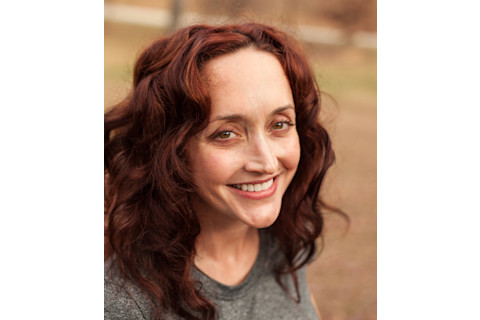
Raymond McCrea Jones
But the euphoria was short-lived, as the benefits wore off in less than an hour. To maintain the effect, Anna would need a steady supply of the drug. Unfortunately, flumazenil normally comes only in vials calibrated for intravenous use.
However, Parker secured a compassionate-use exemption for Anna from the FDA, and she helped persuade executives from the drug’s maker, Roche Pharmaceuticals, to donate the last stash of raw flumazenil powder in their Swiss apothecary. Parker also facilitated a repackaging of flumazenil into two forms: tablets that would dissolve under her tongue, and a skin cream. Together, they have given Anna five blissful years of wakefulness.
Anna’s case drove us to examine CSF from patients with other forms of hypersomnia. We have found similar results in most of these patients, and intravenous flumazenil improved vigilance and alertness in each of six patients to whom it was given, although to varying degrees.
Such variability is not surprising, as one’s propensity to sleepiness is impacted by many factors. In one recent study, more than half of idiopathic hypersomnia patients had relatives with similar symptoms, suggesting an underlying genetic susceptibility. We don’t yet know what environmental triggers — Stress? Sleep deprivation? Viral illness? — are necessary to unleash symptoms.
Two millennia after Aristotle proposed that sleep is regulated by the flow of heat through a person’s body, the solution to the riddle of one woman’s sleepiness has yielded an entirely new understanding of what keeps us awake and puts us to sleep. For people with problematic sleepiness, the promise of new treatment choices is real.
Beginning year six of treatment, Anna has made partner in her law firm — a testament to this reality. In whom else might this biology be disrupting healthy wakefulness? How can we identify them more readily? Is flumazenil a safe and effective long-term treatment for other hypersomniacs? Are there alternative therapies?
These are only a sampling of the questions before us as we continue to unravel the Sandman’s secrets.




